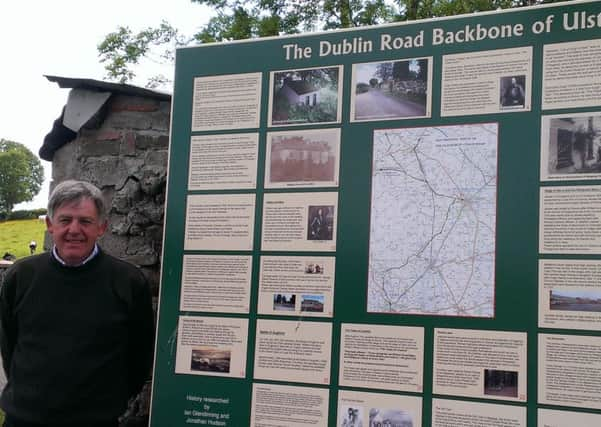Moves to restore ancient ‘Dublin Road’ near Magherafelt


A half-mile stretch of the historic ‘old Dublin Road’ is currently being restored by members of Megargy District Game and Conservation Society (MDGCS).
Restoration of the route - believed to date to the late 1500’s - began in 2008 after locals started asking questions about an overgrown laneway which was referred to by different generations as the ‘Dublin Road’.
Advertisement
Hide AdAdvertisement
Hide AdFast-moving mail coaches used it daily from about 1789, as well as other horse pulled conveyances carrying goods, between Dublin and Derry City, until the railways took over in the 1840s.
The original plantation settlement of Magherafelt was thought to be located at Megargy, about two miles from the present town, and on early maps it was called The Old Town.
Back then Megargy’s ‘main street’ consisted of a few flax scutch and corn mills some which were later demolished or converted into homes. The old mill damns still exists behind the Orange hall.
Twisting their way through the thick Glenconkeyne forest, the mail coaches hugged the high ground in the hope of warding off attacks from bandits and to avoid delays caused by flooding.
Advertisement
Hide AdAdvertisement
Hide AdIan Glendinning, Chairman of MDGCS, likes to refer to the road as “the back bone of Ulster.” He has studied the road and sometimes lectures on it at local history groups.
He said a big breakthrough in their research came when a milestone was turned up by accident in the townland of Moymucklemurry. Etched on the stone was ‘Doire’, the Irish for Derry.
The volunteers of MDGCS recognise the historical significance of the route and the importance of making it accessible to the public. ‘Ulster gateposts’ have been erected along the half-mile stretch and the next part of the group’s plan is to put up signage.
“It is part of our heritage and with a great deal of work we have managed to preserve it for future generations,” added Mr Glendinning.
Advertisement
Hide AdAdvertisement
Hide AdIrish milestones punctuate the route of the old Dublin Road from Derry City.
On its way to Dublin, estimated at 113 Irish miles, mail coaches would have passed along Blackhill and Forgetown, through Desertmartin, Mullaghboy Hill, Dunarnon Road into Megargy, Carmean Road, past the Limeworks before crossing at Moneymore Potato Factory.
It made another crossing at Tulnagee Road at the Old Shanty House, past Desertlyn Churchyard onto Lissan Church at Churchtown and through the Lissan Demesne on into Cookstown via Dungannon, Armagh, Newry and on to Dublin.
There were a few post-inns along the way, for example Coolcalm House and Lissan House.
The mail was held in a box to the rear, where a post office guard stood. They were faster than stage coaches and only stopped for the delivery of mail.